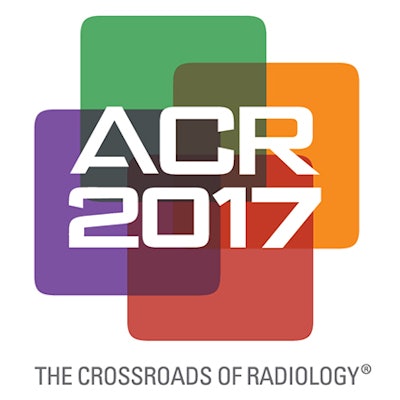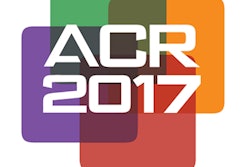
WASHINGTON, DC - With minimal effort and alias phone numbers, radiologists at the University of Pennsylvania devised a way to take calls from patients about their imaging results and not have the interactions interfere with off-hour activities, according to a study presented Sunday at the American College of Radiology (ACR) annual meeting.
The method allows for one-on-one interactions that are highly valued by patients, while minimizing or eliminating intrusions into the radiologists' personal time and keeping their personal cellphone numbers private.
"There is good data that suggests that patients want the opportunity to reach out directly to their radiologists," said lead author and radiologist Dr. Nathan Cross. "Personally, our group had an interest in increasing our contact with our patients. It is something that we have found rewarding."
Patient-centered care
Initiatives such as the Medicare Access and CHIP Reauthorization Act (MACRA) and the evolving elimination of fee-for-service payment models have shifted the focus of healthcare and radiology toward value-based patient-centered strategies. The same goals are outlined in the ACR's Imaging 3.0 program and the new ACR Commission on Patient- and Family-Centered Care.
While web-based patient portals have improved access to radiology reports, there is often no direct way for patients and radiologists to connect verbally, the researchers noted. That is one reason for developing a system to bolster communication, but without imposing too much additional work on radiologists or interrupting their downtime.
Cross and colleagues started the project by adding text to the bottom of each patient report: "Dear Patient: If you have a question about this report, please call this number to speak with the interpreting radiologist." They also included a code to help the radiologist find the particular report before returning the call. The challenge to the scheme is masking the radiologists' personal cellphone numbers.
"I think there are a number of radiologists who might feel uncomfortable putting their own personal cellphone [number] at the bottom of all their reports," Cross said. "They want some control over the time at which they are working."
Call routing
To address this, the researchers used Google Voice to create alias phone numbers. Radiologists can sign up for a random phone number, through which incoming calls can be routed to their personal cellphones. They can also program the service regarding when calls will be accepted.
"For instance, if the radiologist is on vacation or out of the office or afterhours, the call would go to voicemail," Cross explained. "In this case, the voicemail went to a message which said if it were a true emergency, please hang up and dial 911. If you would like to talk to your radiologist, they will get back to you within 24 hours if you leave your name and number."
For the study presented at ACR 2017, participating radiologists logged the number of calls they received, how long the call lasted, and why the patients called. One critical component was to find out how much extra work was involved.
"There is definitely the time the radiologist spends on the phone, but there also may be additional time either refreshing one's memory about the case, looking up comparison imaging studies and charts, and consulting colleagues," Cross said.
Over the course of eight months, 3,896 reports contained the message of how patients could contact their radiologist about their results. The reports were evenly split in terms of the gender of the patient (51% female, 49% male); exam type included MRI (54%), CT (38%), and digital radiography (8%). The majority of studies were performed on outpatients (76%), followed by inpatients (18%) and ER patients (18%). Of all the reports in the study, radiologists received 27 calls, five (18%) of which came from physicians.
Radiologists' time
The researchers found that the 27 calls lasted an average of 7.4 minutes, with a median time of approximately four minutes. The additional work took an average of 12 minutes, with a median time of approximately nine minutes. When the physicians' calls were removed from the calculations, the length of time on a call increased to an average of 8.5 minutes, with the radiologist spending an average of 18 minutes dealing with patient issues.
Regarding the work generated by the calls, the most common task was looking up results, followed by searching for the images in a PACS and calling up older patient reports. The patients' most frequent questions were to ask what the report meant regarding their health, what was their next course of action, how the results affect their medical management, and what were the meanings of some radiology terms.
"While the call rate was low, implementation of this program required minimal effort," Cross and colleagues wrote in their abstract. "The aliased phone number protected the privacy of the radiologist and allowed scheduled consultation hours. Even when called, the time to address questions appears to be minimal and interactions were highly valued by patients."



















